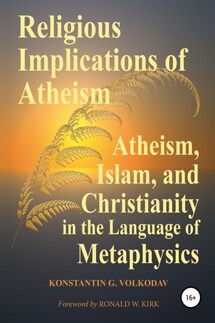Religious Implications of Atheism - страница 11
These and many other similar works of scientists on the emergence of the universe can be figuratively summarized like this:
“With the help of what did the universe come into existence?”
“With the help of physics (i. e., the totality of the laws of matter).”
“With the help of what did physics come into existence?”
“Eh . . ., hmm . . . with the help of physics.”
This type of “proof” is called a “vicious circle”. There is a tale about Baron Munchausen, who pulled himself out of the swamp by the hair with his horse. Alternatively, the same, about the boy who pulled himself out of the swamp by the laces of his own shoes. This is a metaphorical image of how physics created itself with the help of physics. The universe, as it were, pulled itself out of “nothing” by its “own laces”. This metaphor was even taken seriously as an explanation, and the process itself was called “bootstrap”. The universe, as it were, spontaneously aroused in itself all the energy that was necessary for the “creation” and “revitalization” of matter, and initiated the explosion that generated it. This “self-extension”, of course, is absurd and is a logical error, but nothing else can be invented in this atheistic paradigm. Scientists and positivists categorically reject philosophy, since for them “god” is physics, and its “prophet” is mathematics. Therefore, when asked about the origin of physics, they have to build a vicious circle of evidence. After all, otherwise their minds will go off the “rails” on which they were put at school and at institute. [19]
Let us explain the above with examples. Spontaneous electromagnetic radiation by atoms or spontaneous fission of heavy atomic nuclei occurs due to the instability of their energy (or other) state. The time of this event cannot be precisely determined, but is described probabilistically, according to the corresponding distribution function.
However, can we talk about the spontaneous emergence of the laws of physics (as Krauss says)? Of course not. For spontaneous occurrence of a photon, at least a hydrogen atom is needed. If the atoms (matter) themselves do not exist, then there will be no phenomenon of spontaneity, no wave functions of electrons, etc. The same can be said about the vacuum, which has energy and is capable of producing particles. Krauss wrote in his book A Universe from Nothing:
“The existence of energy in empty space-the discovery that rocked our cosmological universe and the idea that forms the bedrock of inflation-only reinforces something about the quantum world that was already well established in the context of the kinds of laboratory experiments I have already described. Empty space is complicated. It is a boiling brew of virtual particles that pop in and out of existence in a time so short we cannot see them directly.” [20]
But this means that the “empty space” that cosmologists study is not “nothing” at all, but a physical (material) object under the conditions of space-time and the existing laws of physics.






